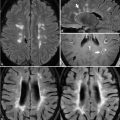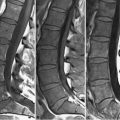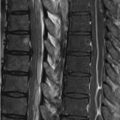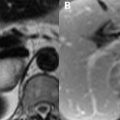93 Ligamentous Injuries of the Ankle Ligamentous injuries of the ankle are quite common and well visualized on MRI. Ligamentous structures appear as uniform low SI on all conventional pulse sequences, although magic angle effects can produce a focus of high SI on short TE sequences (T2WI). Familiarity with the normal ligamentous anatomy of the ankle is crucial. The ankle can be divided into medial and lateral ligamentous compartments. The lateral collateral ligamentous complex is most commonly injured and consists of the anterior talofibular, posterior talofibular, and calcaneofibular ligaments. The normal appearance of the anterior talofibular ligament is illustrated in Fig. 93.1A, an axial FS T2WI illustrating this low SI ligament spanning from the anterior portion of the fibular lateral malleolus to the talar neck. The posterior talofibular ligament is also best visualized on axial or coronal images and spans from the fibular malleolar fossa to the posterior talar tubercle. The anterior talofibular ligament, due to its relative lack of strength compared with other lateral compartment ligaments, is the first and often only ligament torn in inversion injuries of the plantar-flexed foot. Ligamentous stretching constitutes a grade 1 lateral ankle sprain; a partial tear represents a grade 2 lesion. Grade 3 lateral ankle sprains consist of complete tearing of anterior talofibular and calcaneofibular ligaments. The axial FS T2WI of Fig. 93.1B demonstrate thickening, intermediate SI, and discontinuity of the fibers of the anterior talofibular ligament, findings consistent with a partial tear (white arrow). A complete tear of the anterior talofibular ligament is seen in Fig. 93.1C
![]()
Stay updated, free articles. Join our Telegram channel

Full access? Get Clinical Tree








